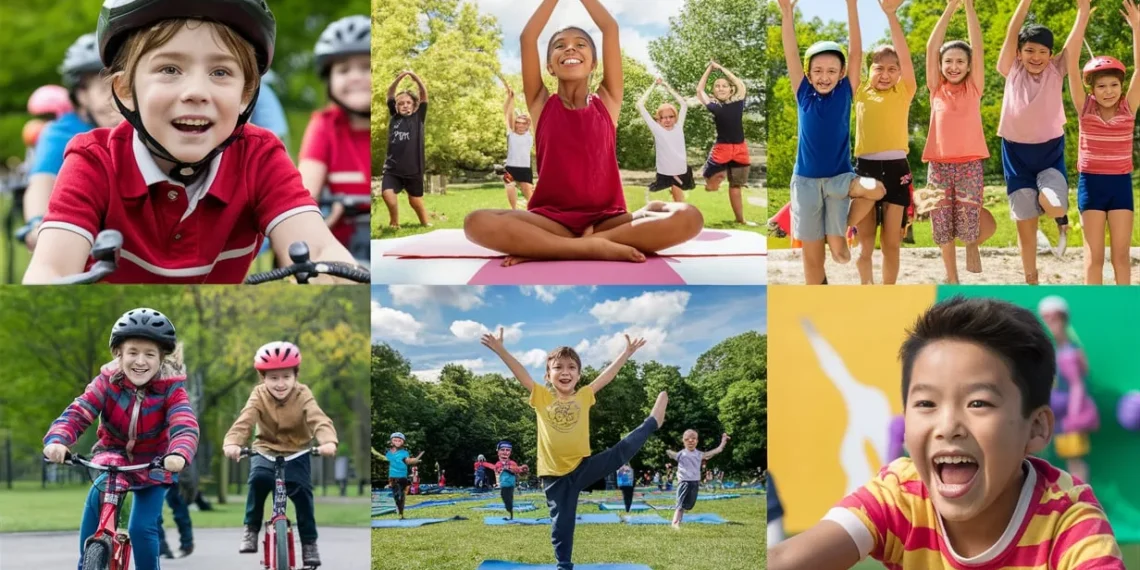Physical education is considered to be one of the integrated aspects of a complete curriculum based in schools all over the world. It is essentially enhancing the physical, cognitive, social, and emotional capabilities through the active participation of the child in physical activity. Physical education forms an essential part of laying down a foundation for fitness and healthy living.
Role of Physical Education in Growth and Development
Physical education is one aspect by which children and adolescents develop their growth.
Enhancing:
- Physical fitness: Physical exercise develops muscles, the cardiovascular system, and flexibility.
- Cognitive function: Physical exercise activates brain functions, aids memory retention, and improves concentration.
- Self-esteem: Success in physical activities enhances self-confidence and self-worth.
- Social skills: Team sports and group activities build teamwork, cooperation, and communication.
- Mental well-being: Exercise acts as a stress reliever, reducing anxiety and enhancing mental health.
Role of Physical Education in Social Development
Physical education provides ample opportunities for socialization and maturation. It fosters skills through collaborative activities such as:
- Development of friendships: Team sports promote bonding and long-lasting relationships.
- Leadership building: Opportunities arise for individuals to take leadership roles.
- Improved communication: Activities demand effective communication and cooperation.
Physical Education as the Basis of a Healthy Lifestyle
Physical education lays the groundwork for lifelong wellness by encouraging:
- Healthy habits: Routine physical activity promotes long-term health.
- Chronic disease prevention: Reduces risks of heart disease, stroke, diabetes, and obesity.
- Improved mental well-being: Helps reduce stress, anxiety, and depression.
- Enhanced quality of life: Increases energy levels, improves sleep, and boosts overall well-being.
A Healthy Lifestyle Must Not Be Missing
A complete healthy lifestyle includes:
- Regular physical activity: At least 30 minutes of moderate-intensity exercise most days.
- Healthy eating: A balanced diet with fruits, vegetables, whole grains, and lean proteins.
- Sufficient sleep: 7–9 hours of quality sleep each night.
- Stress management: Through meditation, yoga, and deep breathing techniques.
- Healthy behaviors: Avoiding smoking, excessive alcohol, and other harmful habits.
Role of Lifestyle in Physical Education
Lifestyle impacts both physical education and general health. Schools should encourage:
- Healthy food consumption: Promote accessibility and education around nutritious food.
- Physical exercise: Provide structured environments for active participation.
- Healthy lifestyle education: Teach the risks of unhealthy behaviors.
- Support resources: Offer materials and guidance for making better lifestyle choices.
Frequently Asked Questions on Physical Education
1. What are some of the benefits of physical education to a student?
- Improved physical fitness
- Better cognitive function
- Boosted self-confidence
- Enhanced social skills
- Reduced anxiety and tension
2. How frequently should students practice physical education?
Students should engage in at least 30 minutes of moderate-intensity physical activity most days of the week. Schools should aim to offer PE daily if possible.
3. What are some of the activities involved in physical education?
- Team games: Basketball, football, volleyball
- Individual sports: Running, swimming, cycling
- Gymnastics and dance: Enhances coordination and rhythm
- Yoga and Pilates: Boosts flexibility and balance
- Outdoor activities: Hiking, camping, nature-based exercises
4. How can parents support a child’s physical fitness?
- Encourage regular physical activities
- Participate in walks, cycling, or playtime together
- Provide a nutritious diet
- Ensure adequate sleep
- Lead by example with a healthy lifestyle
5. What are common challenges in physical education programs?
- Limited funding
- Low priority in curriculum
- Lack of trained teachers
- Inadequate facilities
6. How do schools respond to these challenges?
- Allocate dedicated PE time
- Provide adequate funding
- Train and retain qualified PE teachers
- Improve facilities and maintain sports equipment
- Partner with community-based organizations
7. What is the role of physical education in health and wellbeing?
- Prevents chronic diseases
- Enhances mental health
- Promotes better quality of life
8. How can physical education be made available to all students?
- Offer a variety of activities
- Modify programs for students with disabilities
- Foster an inclusive environment
- Provide assistive devices and personalized equipment
9. What is the future of physical education in schools?
Schools are expected to:
- Increase inclusion and accessibility
- Allocate more resources
- Create a more supportive setting
- Prioritize lifelong health habits
10. How can physical education be integrated with other subjects?
- Math: Calculating heart rate, distance, data tracking
- Science: Understanding anatomy, nutrition, body systems
- Social Studies: Exploring cultural and historical aspects of sports
- Language Arts: Writing reflections, sports stories, or research essays
Conclusion
School-based physical education significantly contributes to building a healthy lifestyle and lifelong fitness. It supports children’s physical, cognitive, social, and emotional development, empowering them with the habits and skills necessary to lead fulfilling and healthy lives.




